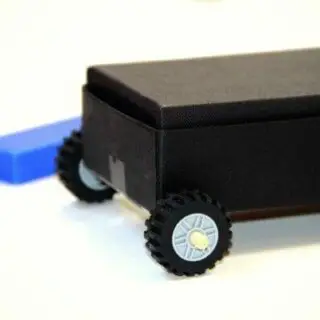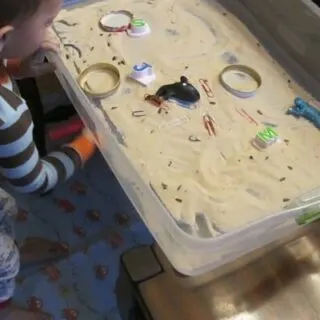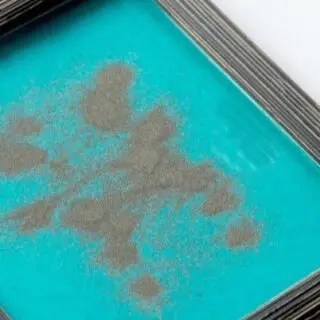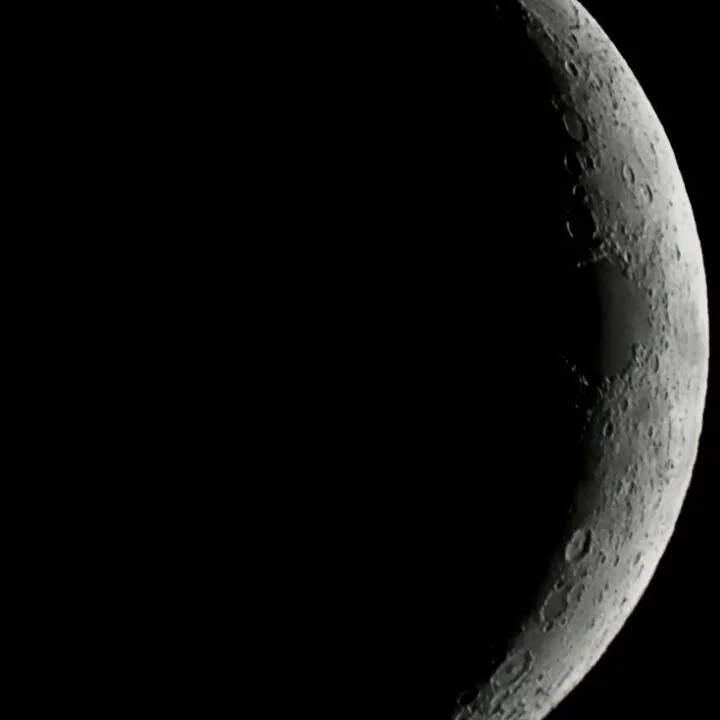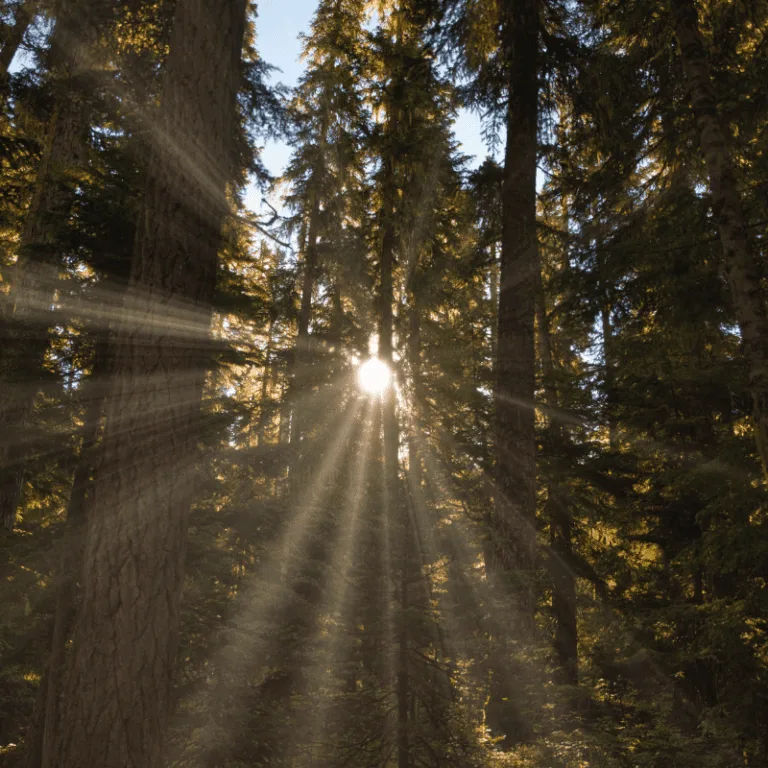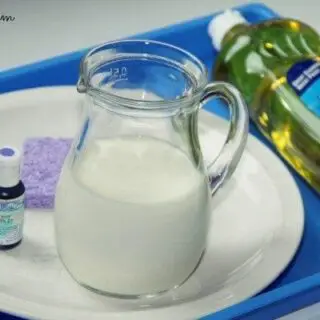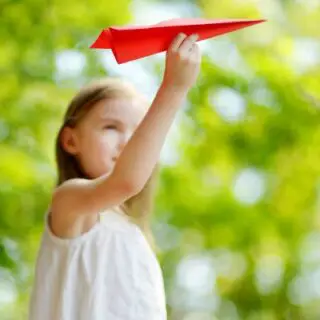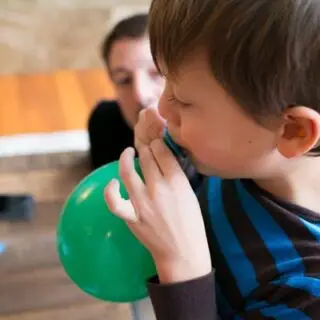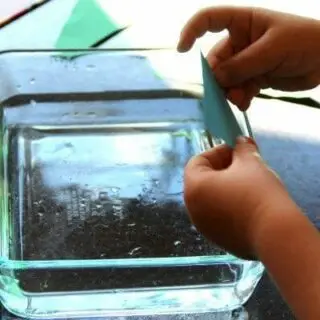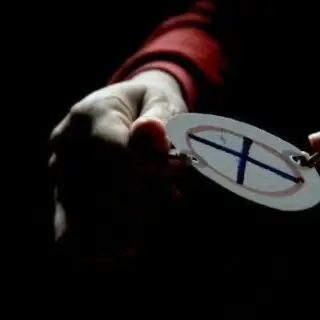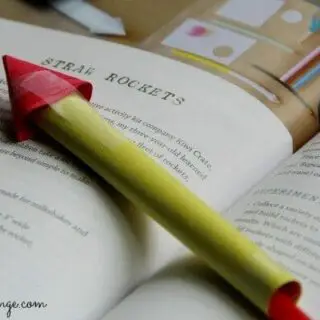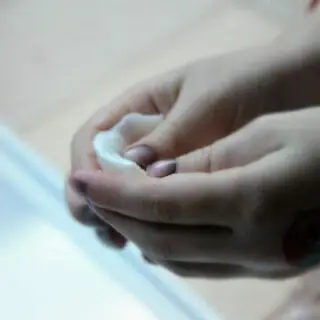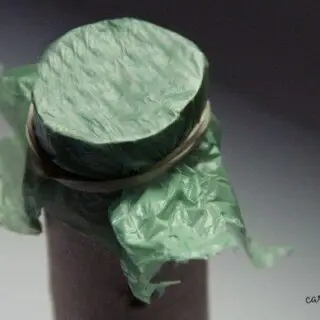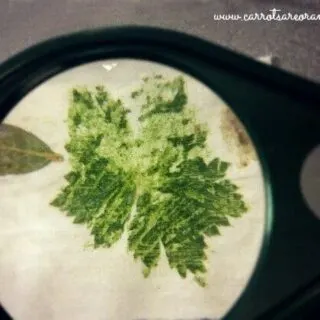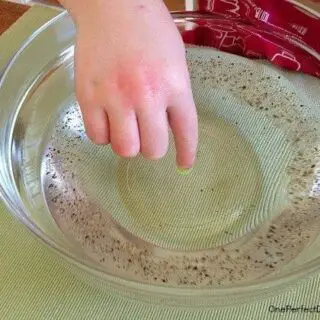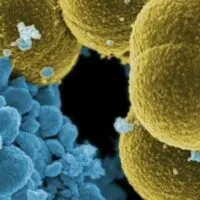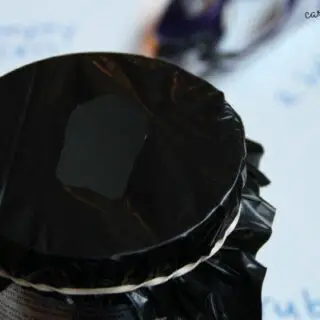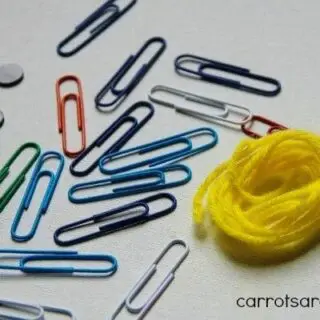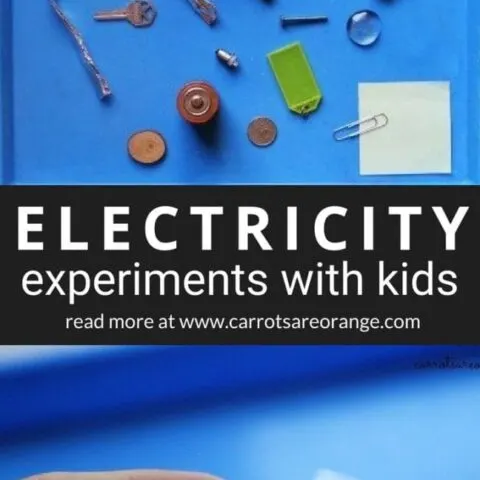I earn commissions from my affiliated links. Please see my disclosure policy for more details.
What better science experiment to do when discussing the earth's atmosphere than the classic baking soda & vinegar experiment?
This idea I credit to my middle son.
You see, I bought adorable earth balloons and stashed them away in my secret science shelves (also known as “my pantry”). Well, he discovered these balloons and begged for a “baking soda vinegar reaction activity” and how could I not deliver?
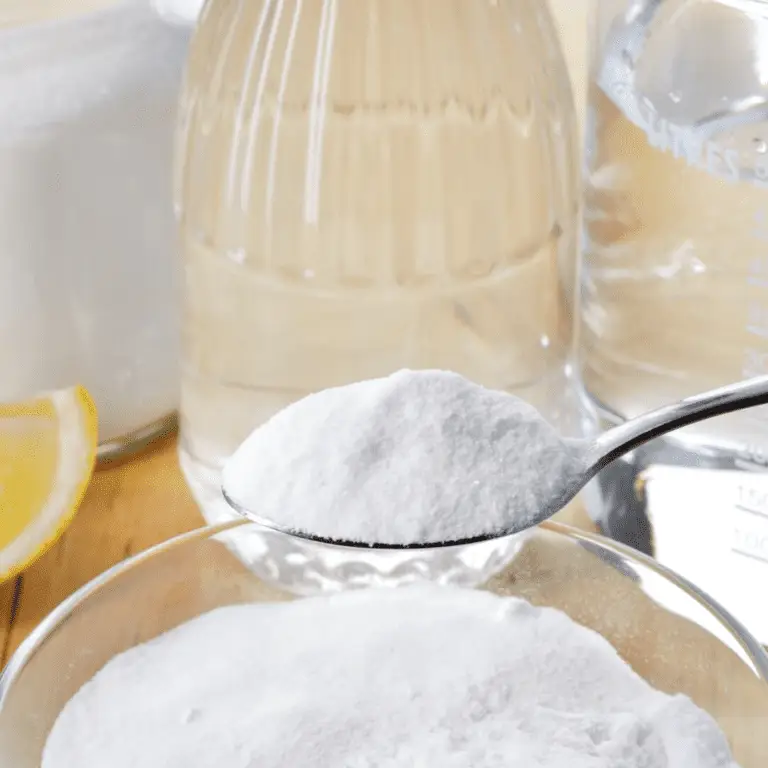
My boys would choose to do science experiments all day long and that is quite all right with me. They tinker, they build, and they iterate along the way. This type of activity is critical.
The iteration as an experiment fails is key to embracing failure a la Carol Dweck's Growth Mindset approach (an amazing book by the way – see below for a list of resources mentioned in this post).
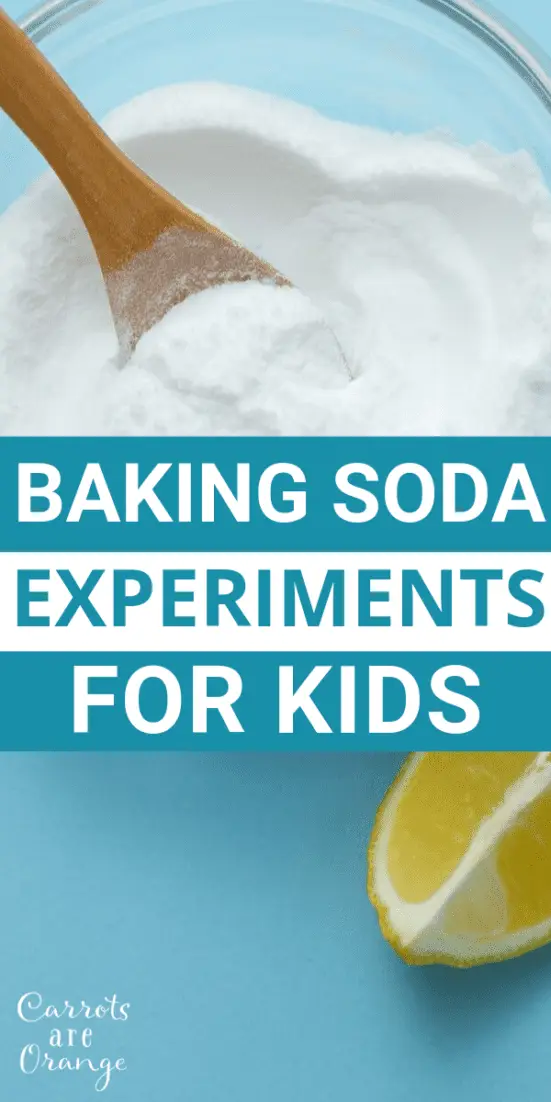
Baking Soda & Vinegar Reaction
What happens when you mix baking soda & vinegar?
My secondborn discovered these balloons and probably thanks to some youtube video begged to have access to the baking soda and vinegar. My sons cannot get enough of science.
We are a lab on most days experimenting with various substances and reactions.
Celebrate Earth Day with this fun baking soda and vinegar experiment with balloons!
How could a mom resist? Really?
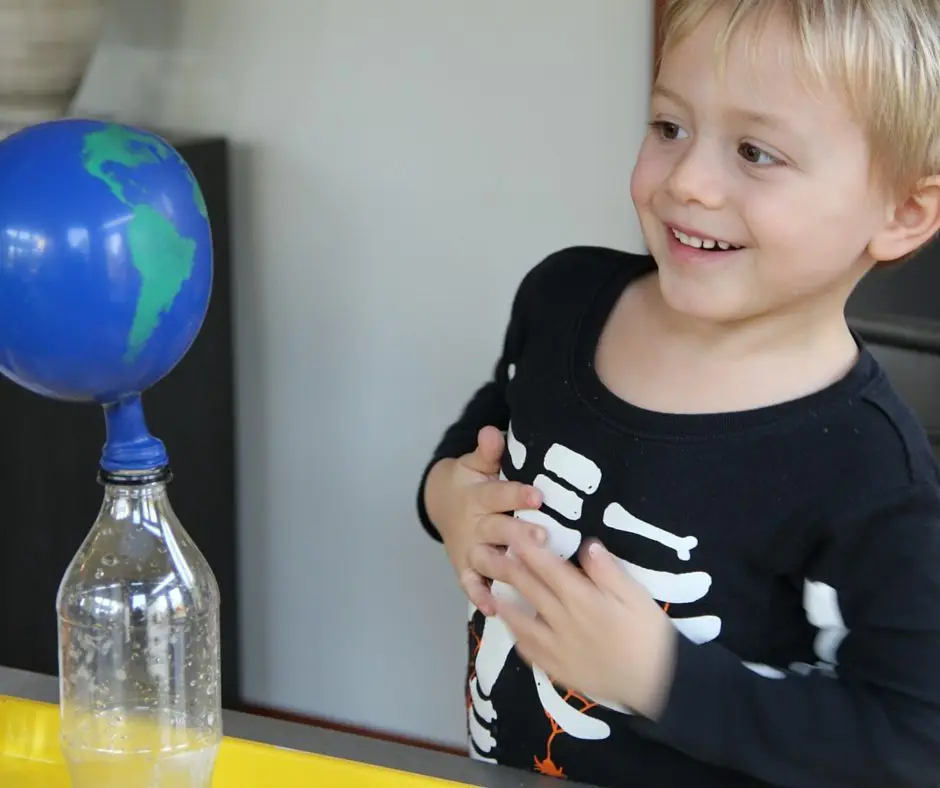
Seriously, look at that face. Such awe. I can't resist.
Baking Soda Vinegar Science
This experiment is so incredibly easy to put together. Plus the learning is hands-on and kids' jaws drop when they observe the reaction.
Materials for this Activity
- Earth balloons
- White vinegar
- Baking Soda
- Funnel
- Plastic Bottle
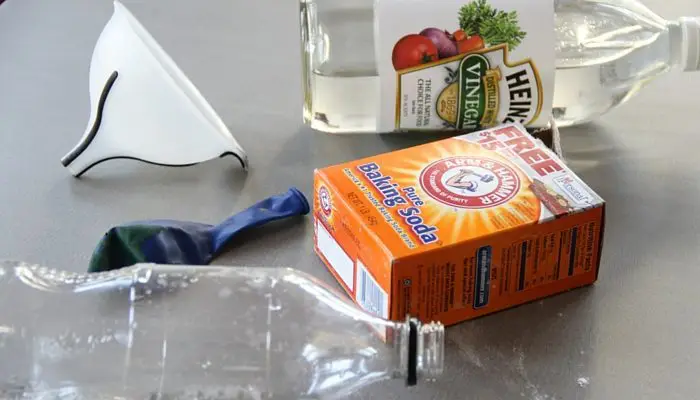
Baking Soda and Vinegar – Science Process
- Gather your materials
- Place the balloon opening around the opening of the funnel
- Pour a cup of baking soda using a funnel to fill the balloon halfway or so
- Use the funnel to fill the plastic bottle with a cup of white vinegar
- Place the balloon opening around the mouth of the bottle
- Hold the balloon up so the baking soda falls into the bottle
- Observe & grab some paper towels
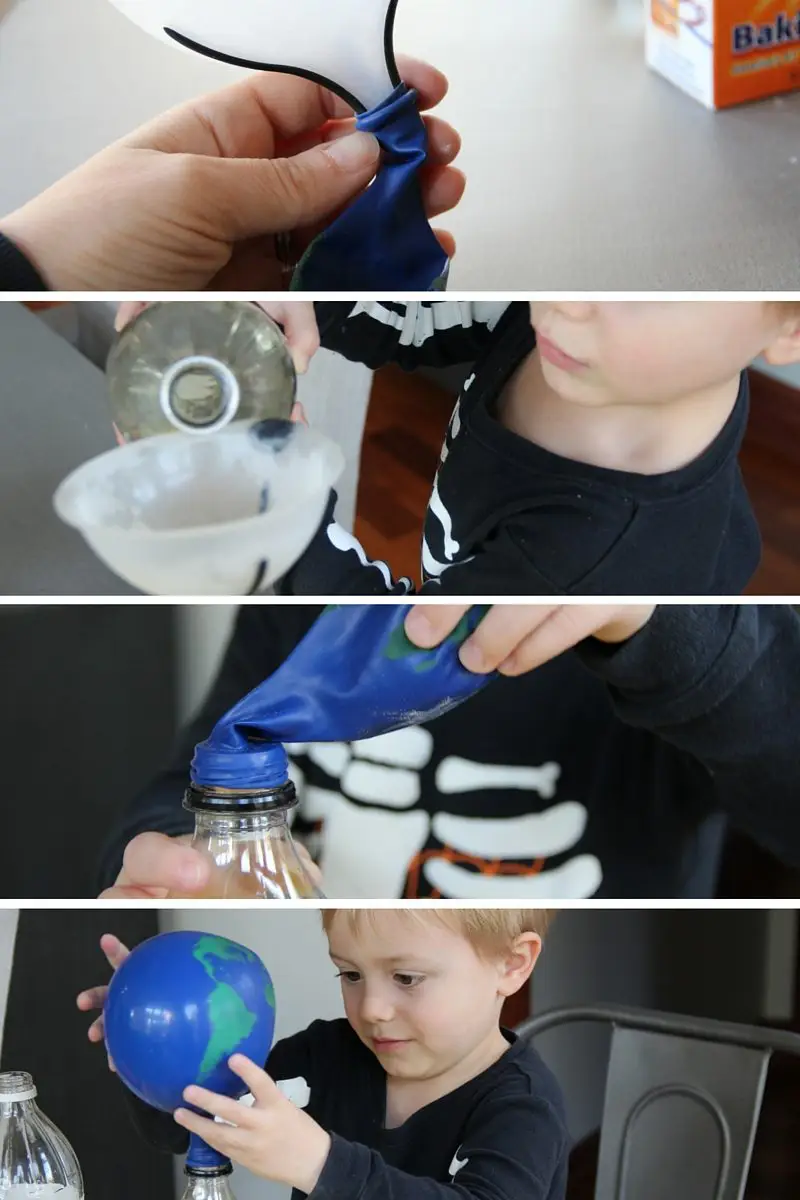
Nothing has such power to broaden the mind as the ability to investigate systematically and truly all that comes under thy observation in life.
~ Marcus Aurelius
The Science Behind Baking Soda & Vinegar Chemistry
Baking soda and vinegar have chemistry. Furthermore, we know that these two substances react with each other because of an acid-base reaction. Baking soda is bicarbonate (NaHCO3) and vinegar is acetic acid (HCH3COO). One of the products this reaction creates is carbon dioxide, which makes bubbles.
When the baking soda meets the vinegar, there is a chemical reaction as carbon dioxide gas is created and fills the balloon causing it to inflate. Carbon dioxide is an important gas in the earth's atmosphere. Carbon Dioxide plays a vital role in regulating the earth's temperature. Baking soda and vinegar have an acid-based reaction, which results in the gas that fills the balloon.
Baking Soda and vinegar react chemically we know that much simply by observing the experiments. We can see the chemical reaction. What it is about the two ingredients that react in such phenomenally cool ways?
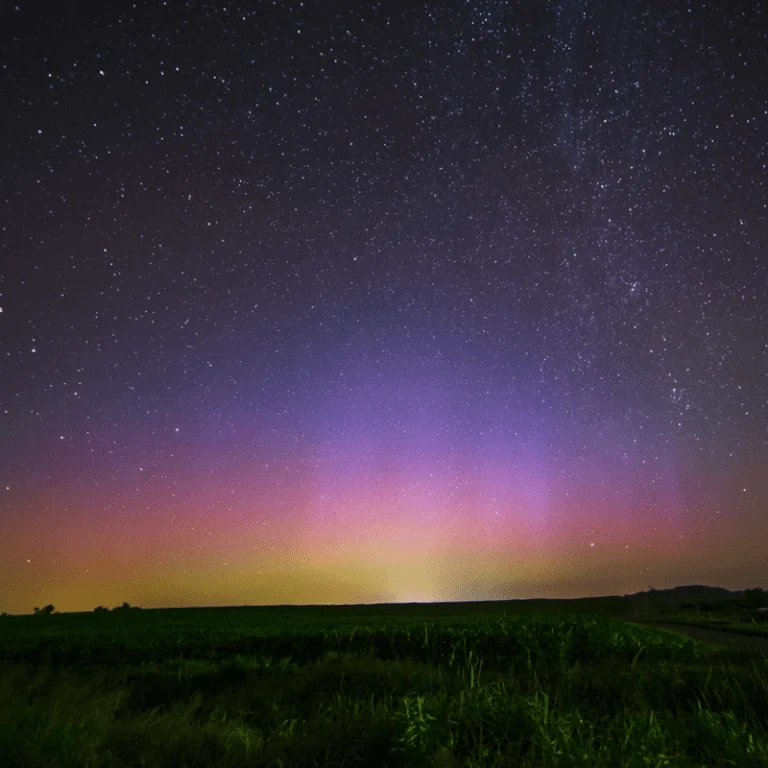
Carbon Dioxide & the Earth's Atmosphere
Before I go I have to equip you with some back pocket scientific knowledge to impart to your children.
What is the role of carbon dioxide in our atmosphere?
Well, I am glad that you asked because carbon dioxide plays several important roles in our environment. First of all, carbon dioxide is found in the air but also in water as part of the carbon cycle. Carbon dioxide is a greenhouse gas that traps infrared radiation heat in the atmosphere. Furthermore, it plays a crucial role in the weathering of rocks. Carbon dioxide is the carbon source for plants.
Why is Carbon Dioxide So Important?
Carbon dioxide plays a critical part in plant and animal processes. Examples include photosynthesis and respiration. Photosynthesis occurs as green plants convert carbon dioxide and water into food compounds, such as glucose, and oxygen.
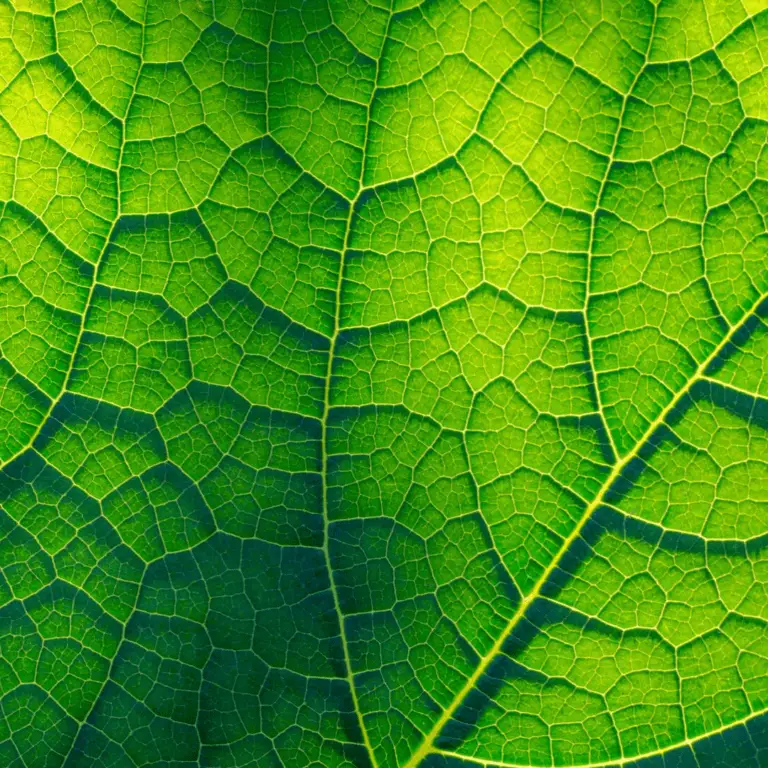
How Do Humans Interact with Carbon Dioxide?
Carbonated beverages, of course! Well, that is certainly one example but there are many additional ways human beings use carbon dioxide. We also rely on carbon dioxide in baking. For instance, it is released by baking powder or yeast making cakes and other delicious food items rise.
Other uses include putting out fires with fire extinguishers. Carbon dioxide is denser than air so it works well to extinguish the fire as it suffocates or blankets the fire because it is heavier. If oxygen cannot get to a fire, it will die out.
Carbon dioxide exists predominantly in the form of gas, but it also has a solid and a liquid form. It can only be solid when temperatures are below -78 C. The solid form of carbon dioxide, commonly known as Dry Ice, is used in theatres to create stage fogs, to do super cool science experiments, and make things like “magic potions” bubbles.
Liquid carbon dioxide mainly exists when carbon dioxide is dissolved in water. Carbon dioxide is only water-soluble when pressure is maintained. After pressure drops the CO2 gas will try to escape to the air. This event is characterized by the CO2 bubbles forming in the water.
{Source: https://www.lenntech.com/carbon-dioxide.htm}
Further Baking Soda & Vinegar Learning
- What happens when you switch up the ratios a bit?
- Or what happens if you add dish soap or food coloring to the baking soda & vinegar explosion?
- If you want lots of fizzes, try adding a liquid soap and see how the reaction changes.
- Does more vinegar mean more bubbles? You bet it does!
If you enjoy science as we do, check out these popular posts:
- Learn Electricity with Kids
- How to Make a Pulley
- Science of Friction
- How to Build a Balloon Rocket
- The Ultimate List of Baking Soda & Vinegar Experiments
- Chemistry For Kids- Introduce Budding Scientists to Amazing Resources

